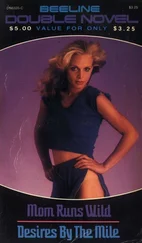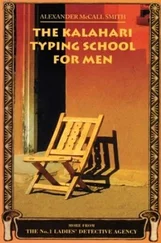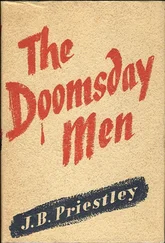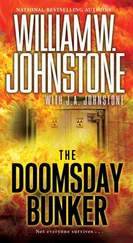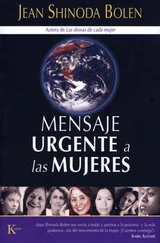I came to this subject through Leo Szilard’s extraordinary life story. He was a brilliant man, bursting with original ideas on everything from science to politics and even fiction. He was, said one colleague, the greatest scientist never to have won a Nobel prize. Szilard was inspired by a vision of how science could transform the world, but he was also haunted by a fear of how people might misuse this power. His life epitomizes the glories and follies of twentieth-century science and history.
However, I soon realized that to fully explore the questions raised by Szilard’s life, I would have to undertake something more wide-ranging than a biography. For Szilard’s hopes and fears were deeply rooted in the popular culture of his day, as of course were those of all the doomsday men. To explain why some of the most gifted and idealistic men of the twentieth century spent so much effort trying to destroy the planet, I needed to pursue the origins of these hopes and fears, not only in the lives of the scientists but also in films, fiction and other popular media. Then I might be able to understand why not only the doomsday men, but ordinary men and women were so beguiled by the dream of the superweapon – a dream that may yet turn into a nightmare for us all.
I would address one general admonition to all – that they consider what are the true ends of knowledge, and that they seek it not either for pleasure of the mind, or for contention, or for superiority to others, or for profit, or fame, or power, or any of these inferior things, but for the benefit and use of life… [that] there may spring helps to man, and a line and race of inventions that may in some degree subdue and overcome the necessities and miseries of humanity.
Francis Bacon,
Instauratio magna (1620)
If sunbeams were weapons of war, we would have had solar energy long ago.
George Porter
The football stadium at the University of Chicago had not been used for three years. In 1939 the university’s president, Robert Hutchins, had made the controversial decision that football was a distraction in the academic life of a proud institution whose coat of arms displayed a phoenix rising triumphantly from the ashes, together with the motto Crescat scientia, vita excolatur – ‘Let knowledge increase so that life may be enriched’. So the football team hung up its boots, and gradually the weeds took over the stadium.
Like the rest of the campus, the stadium had been built during the late nineteenth century in an English Gothic style. Even a progressive, New World university found it hard to shrug off the ghosts of the old world completely. With its gargoyles and crenellated walls, Stagg Field looked more like a medieval castle than a football stadium. It was certainly an unlikely setting for the most important scientific experiment of the twentieth century.
On a crisp December morning, a group of students were making their way through the fresh snow to the first lecture of the day. Their breath rose like smoke in the pale sunlight. A short, comfortably overweight man passed them, walking hurriedly towards the disused stadium. His stride was purposeful and his bearing dignified, an impression only slightly spoiled by his roly-poly gait. Near the west stands the snow was stained black as if ash had been scattered there. For the past few weeks military guards had been stationed outside the imposing stone portal that led beneath the stands. It was still an unusual sight on the campus, even in wartime, but no one would say what they were there to protect.
‘Good morning, Dr Szilard,’ said one of the guards. He pronounced it with a drawl, See-lard .
Leo Szilard smiled briefly at the soldier, whose nose had turned red in the subzero temperatures. Just the other day, he had taken pity on the man and had recommended a drink from his Budapest student days to combat the bitter cold: rum tea. But this morning there was no time for idle chat, and Szilard passed swiftly through the door and made his way down the gloomy corridor.
The previous night, restlessness had driven him out of his small and sparsely furnished room on campus. Szilard had called on a colleague and convinced him to brave the freezing night air and go for a late meal. Not that he was hungry; he had already eaten. But he had to talk to someone to ease the burden that was weighing on his mind. Over his second dinner that evening, Szilard confessed his fears about the next day’s experiment. The precise nature of their work had to remain a secret, he told his biologist friend mysteriously, but if the experiment ‘works too well’ there might be an explosion. A big explosion. 1
The corridor took Szilard underneath the west stands of Stagg Field to a slate-walled room. It was a doubles squash court, about sixty feet by thirty and thirty feet high. Incongruously, spotlights on tripods had been set up as if on a movie set. Szilard stepped gingerly over the cables. He trod carefully because the surface was as slippery as a dancefloor. A fine layer of grey powder lay on every surface – graphite dust, the purest graphite on earth. He could even taste it in the cold, still air. Szilard hurried up a staircase to the small spectators’ balcony, about ten feet above the court and overlooking its north end. There were plenty of spectators already there, over thirty of them, and they were all scientists. But today there was no college final – today they would witness the beginning of a new age in science and warfare.
Szilard was breathing heavily. Despite the penetrating cold, he loosened his tie and unbuttoned his thick overcoat. The front of the balcony was packed with scientific monitoring equipment. Leona Woods, a shy 23-year-old graduate student and the only woman present, was making last-minute adjustments together with a short, dark-haired man. That was Enrico Fermi. He was wearing a grey lab coat smeared with the same graphite dust that coated everything, even the snow outside the stadium. Just three years earlier, the Nobel prizewinning physicist had been forced to flee his native Italy with his Jewish wife because of Mussolini’s anti-Semitic laws.
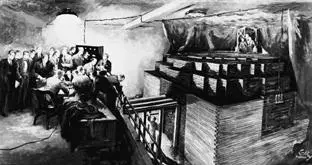
The world’s first nuclear reactor, CP-1, goes critical on 2 December 1942. No photographers were present, but Chicago Tribune artist Gary Sheahan imagined the scene in 1957. Leo Szilard stands in the middle of the group at the left, holding a briefcase. Enrico Fermi is standing next to Walter Zinn, who is leaning with his elbow on the rail.
The squash court was eerily silent, and the scientists were speaking in whispers. Szilard nodded a greeting to his friend Eugene Wigner, who was deep in conversation with Crawford H. Greenwalt, who would later become president of the Du Pont Chemical Company. Wigner and Szilard had been close friends since the 1920s. Both men had left their homes in Budapest to study science in Berlin, but as the tide of fascism engulfed Europe they had made their way to America, as had many of their scientific colleagues gathered on the balcony that cold December morning.
Szilard looked down at the squash court. In its place loomed a large wooden scaffolding draped with grey rubberized sheeting. Inside this frame squatted a huge structure built of black bricks. This was Chicago Pile Number One, or CP-1 for short.
The world’s first atomic pile, what we would now call a nuclear reactor, was as big as a house – about twenty feet high and twenty-five feet wide. It consisted of fifty-seven layers of pure graphite blocks, the layers alternating between solid blocks and ones which were hollowed out to hold slugs of uranium. The blocks containing the uranium formed a cube-like lattice within the pile. In all they had used 250 tons of graphite and six tons of uranium.
Читать дальше



